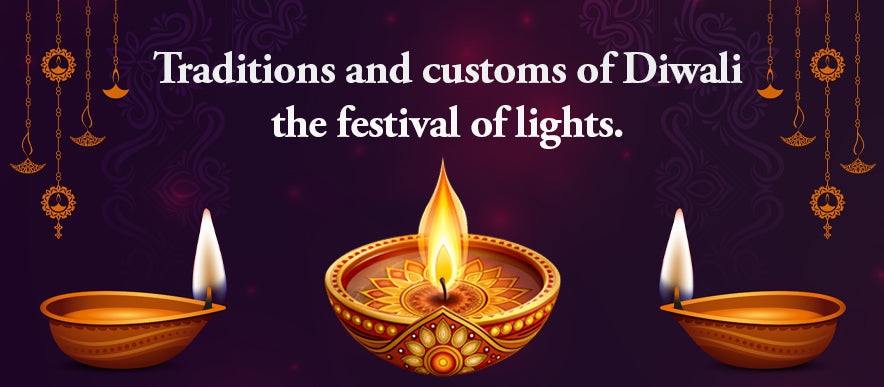Introduction to Diwali
The festival of lights, commonly referred to as Diwali is one of the major celebrations in India as well as in most parts of the world. It is a representation of good over evil and light over darkness. Families gather to light diyas, decorate, exchange sweets and attend pujas that are dedicated to deities such as Goddess Lakshmi and Lord Ganesha.
The Festival of Lights is not only about rituals, family, community and making people happy. Diwali customs exhibit the cultural diversity of India by having elaborate rangoli patterns up to spectacular fireworks. Although it is true that some of the customs are universal, there are quite a number of Unique Aspects of Diwali Celebrations in different regions.
It is also accompanied by the Naraka Chaturdashi celebration that has strong South Indian roots and the victory of Lord Krishna over the demon Narakasura. Collectively, these make the core of the Diwali celebration.
Diwali in North India
Historical Significance - Diwali in North India is a celebration of the coming back of Lord Rama to Ayodhya after he overcame Ravana. Cities and villages are lit with lamps which also reveal the real nature of the Festival of Lights. Flowers are used in decorating temples and communities do story telling sessions that retell the epic of Ramayana.
Puja and Rituals - The area is famous in its fancy Lakshmi Puja. Families clean and festoon their houses, light diyas and wish to be wealthy and prosperous. There is also a tradition and togetherness, with firecrackers and card games in common use. These traditions also show the Unique Aspect of the Diwali Celebrations in North.

Culinary Traditions - the air is full of the smell of celebratory cookies such as gulab jamun, barfi and kaju katli. Savory snacks like namak pare and mathri are made in bulk to distribute to relatives and guests. This culture insists on the culture of giving in times of the Festival of Lights.
Diwali in South India
Celebration of Naraka Chaturdashi - Naraka Chaturdashi is one of the most interesting characteristics of Diwali in South India. It celebrates the success of Lord Krishna over his demon Narakasura or the defeat of evil and the reestablishment of dharma. The day begins with the rituals of purifying the families who get up early, take oil baths and dress in new clothes.

Decorations and Lamps - South Indian homes are lined with jasmine flowers, marigold and mango leaves. Oil lamps light up rows of court yards, which repeats the theme of the central idea of the Festival of Lights. These cultures point out the Specialities of Diwali Celebrations in the south.
Food and Community - Snacks such as murukku, adhirasam and laddoos are made and served. The togetherness at community levels enhances unity, which is the nature of Diwali not only a festival but also a multicultural framework amongst generations.
Diwali in East India
Goddess Kali Worship - In East India, mainly Bengal, Diwali is on the same day as Kali Puja. Devotees venerate the goddess Kali through rituals, prayers and offering. The use of lamps at this period possesses the same value as the Festival of Lights and it signifies the triumph of the power of the deities.
Alpana and Artistic Traditions - The other distinctive practice is the manufacture of alpana design using rice paste. These are complex art works that belong to the Unique Aspects of Diwali Celebrations in the east, which can be seen to exemplify creativity and devotion.
Offerings and Community Meals - Bhog is prepared by families that consists of rice, fish and sweets, which they serve to the goddess and then distribute it to family and friends. Lamps and fireworks light the night and connect the sacred with the fun.
Diwali in West India

Govardhan Puja and Bhai Dooj - In West India, Diwali spreads in more than five days. Govardhan Puja and Bhai Dooj comes after Naraka Chaturdashi celebration. These traditions also emphasize the connection of the sibling and the appreciation of nature.
Rangoli and Decorations - Rangoli colorful designs are made using powder and flowers on courtyards. The glam diyas underline the real essence of the Festival of Lights- adding positive elements to a house.
Traditional Foods - The celebrations are characterized by delicacies such as puran poli, shakkarpare and chakli. The foods are symbols of wealth and happiness, which carries the Unique Aspect of Diwali Celebrations in western India.
Global Diwali Celebrations
Nepal and Tihar Festival- In Nepal Diwali goes together with Tihar or Diwali of Lights. One of the significant aspects of the rituals is the Naraka Chaturdashi celebration. This region is unique in terms of animals, such as cows, dogs and crows being worshipped as a means of harmonizing with nature.
Diwali in Sri Lanka - Sri Lanka observes Deepavali which is closely linked with the Rama-Ravana myth. The universality of the Festival of Lights in different cultures can be highlighted by rituals at temples, diyas, and sweets sharing.
Diwali in America - Diwali is now a mainstream festival in the United States. Cultural events are held at major cities as landmarks are glowing with lights. These new customs combine tradition and inclusiveness to the list of Unique Aspects of Diwali Celebrations all over the world.
Conclusion
Festival of Lights is not only a holiday but a cultural event which unites people of all regions and all nations. Since the impact of the Ramayana in North India to the Naraka Chaturdashi festivity in the south, each part throws emphasis on the Distinctive features of Diwali Celebrations that characterizes their culture. Diwali is gaining more and more worldly acceptance and helps to be more inclusive and cross-cultural. Diwali, whether in the form of food, rituals or lights, is the message of hope, prosperity, and the victory of good over evil which is universal.
FAQs
Q1. What is the meaning of Diwali?
It is named the Festival of Lights since diyas and candles are lit by people to demonstrate the success of light over darkness.
Q2. What does the Naraka Chaturdashi festival mean?
The Naraka Chaturdashi festival is recorded to mark the victory of Lord Krishna over Narakasura, the victory of the good over the evil.
Q3. What do you consider to be some of the Unique Aspect of Diwali Celebrations in East India?
East India lays stress on Kali Puja, alpana designs, and communal feasts, which are some of the Unique Aspects of Diwali Celebrations there.
Q4. What is the way people in south India celebrate Diwali?
South India has festivals like Naraka Chaturdashi, oil baths, flower arrangements and sharing of snacks such as murukku and laddoos.
Q5. Is Diwali celebrated in other countries other than India?
Yes, the Festival of Lights is celebrated all over the world and the key ones are in Nepal, Sri Lanka and even the United States.

